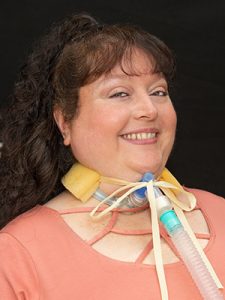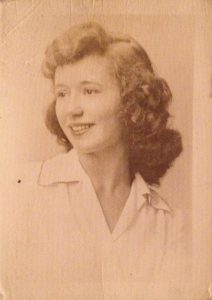Stony Brook University recognizes Women’s History Month with its annual celebration that highlights the achievements of women, raises awareness against bias, and promotes social action for equality. This year’s theme #BreakTheBias was adopted from International Women’s Day which is held annually on the first Tuesday in March. Events will take place through Monday, March 28.
The university’s “Hybrid Opening Program in Celebration of International Women’s Day” will take place on Monday, March 7 at 1 p.m., ET in the Student Activities Center Ballroom A with limited seating, and will also be accessible on Zoom. This year’s program will feature a discussion about issues facing women with three accomplished SBU alumni — Maureen Ahmed ’11, Stephanie Baez ’08 and Brooke Ellison ’12.
The program will be hosted by senior Cassandra Skolnick, a student member of the Women’s History Month Committee who is majoring in Women’s, Gender and Sexuality Studies. In addition, student moderators will be Amber Lewis, a Junior, Journalism major; Minors in Music and Women’s Gender, and Sexuality Studies and Sanjana Thahura, a Senior, Biology major with Interdisciplinary Biology Specialization, Undergraduate College Academy Minor in Health and Wellness. Attendees can register online to attend the opening ceremony on Zoom.
Meet the panelists:
-

Stephanie Baez Maureen Ahmed (‘11) is a foreign-affairs officer with the U.S. Department of State in the Bureau of Democracy, Human Rights and Labor (DRL), where she provides policy guidance on how to advance human rights, democracy, and governance across South and Central Asia. Ahmed is also an international human rights activist and policy leader with expertise in diplomacy, foreign policy, human rights, gender, global health, HIV epidemiology, and civil society integration. Prior to DRL, she worked at the Department’s Office of the Global AIDS Coordinator (O/GAC), where she managed the President’s Emergency Plan for AIDS Relief (PEPFAR) South Africa program, the United States’ largest global health assistance program Ahmed was named a 2020 National Security Fellow with the Truman National Security Project and a 2019-2020 Penn Kemble Fellow with the National Endowment of Democracy.
-

Maureen Ahmed Stephanie Baez (‘08) is vice president for Communications and Public Affairs at Global Strategy Group in New York, a public relations and research firm. She leads strategic communications planning initiatives that incorporate traditional and digital communications channels and platforms, as well as grassroots/grasstops components. Baez served as the communications director for Congressmen Hakeem Jeffries and John Conyers, was senior vice president of public affairs for the New York City Economic Development Corporation, and was director of communications and public affairs for the Central Park Conservancy. She earned a Bachelor of Arts degree in Political Science with a concentration in Journalism.
-

Brooke Ellison Brooke Ellison (‘12) is an associate professor in Health and Rehabilitation Sciences and Behavioral and Community Health in the Stony Brook School of Health Professions. She is also director of the PhD program in Health and Rehabilitation Sciences, and director of the Center for Community Engagement and Leadership Development. Ellison’s work as a researcher and scholar focuses on the ethics and policy of science and health care, particularly the intersection of disability and bioethics, and strategies to make healthcare and technology accessible to those most in need. Ellison was paralyzed from the neck down after being hit by a car while walking home from her first day of junior high school; 10 years later, she graduated magna cum laude from Harvard University. She received her PhD in sociology from Stony Brook in 2012, was chosen to be a World Economic Forum Young Global Leader in 2014, and in 2017, was chosen to serve on the board of directors and executive committee of the New York Civil Liberties Union. In 2018, Brooke was named a Truman National Security Project Political Partner and was appointed to serve as a commissioner on the Suffolk County Human Rights Commission in 2020.
On Monday, March 21 (2pm, ET) as part of the speaker series is “In Defense of All Women’s Spaces,” at Melville Library, Special Collections Seminar Room, E-2340.
Stony Brook University graduate instructor Stephanie Bonvissuto will host this discussion:
How does accessing social spaces relate to the social construction of gender and sexual identities? How can site-specific signage taken as signifiers offer a view into societal ethics and cultural ethos? What are the institutional investments in policing bodies and enforcing cis-heteronormativity? And what can queering space (and spatiality) offer in terms of the future design of ‘something else’? This talk takes as its point of departure debates around public gendered restrooms to consider the biopolitics of space, the designs of power and knowledge, and the generative connections between spatial equity and social justice.
On Monday, March 28 (between 3-5pm, ET), “Closing Program in Celebration of International Women’s Day” in the Student Activities Center Ballroom A with limited seating.
Former National Public Radio host of “The Takeaway” as well as New York Times/CNN reporter Tanzina Vega (‘96) will host.
Meet the host:
For more than a decade, Tanzina Vega’s (‘96) journalism career has centered on inequality in the United States through the lens of race and gender. She’s been a reporter and producer for the New York Times and CNN where her work spanned text, digital and broadcast television. She most recently spent three years as the first Latina weekday host of “The Takeaway” on WNYC, New York Public Radio. Tanzina has covered many of the most consequential news events of the past decade, including multiple presidential elections, the COVID 19 pandemic, the rise of #BlackLivesMatter, Puerto Rico’s political crisis and the January 6 Capitol insurrection. In 2019 she was awarded the Robert G. McGruder Distinguished Lecture and Award from Kent State University. Prior to that she was a fellow at the Nation Institute and a Ferris Professor of Journalism at Princeton University. She is a distinguished graduate of the Craig Newmark School of Journalism at City University of New York where she earned Masters in Digital journalism. She lives with her son in New York City.
For more information visit https://www.stonybrook.edu/
































































